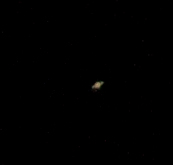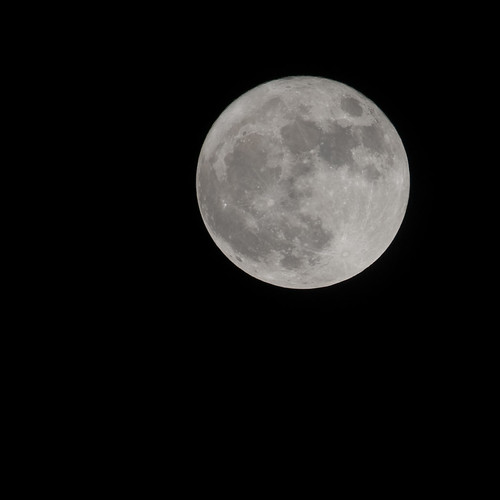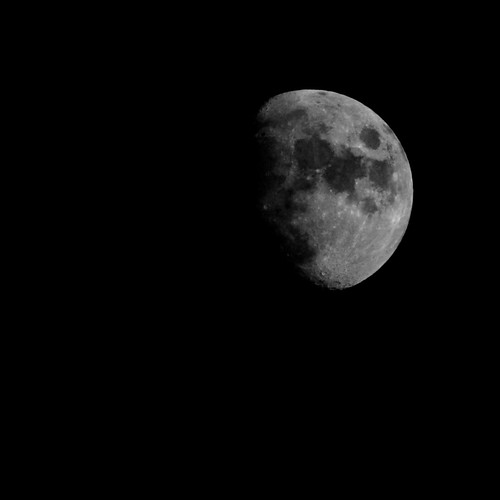Last Saturday saw a “supermoon” – where the Earth’s moon is both full and in perigee–syzygy and so appears larger than usual. I went out to try and shoot some images of the moon over the river but it was too high in the sky for the effect I was really after and it slipped behind some clouds. Later on, the sky cleared and I got out my longest lens to take a picture of the moon (albeit without anything to put its size into context) and this was the result:
I was pretty pleased with this – especially when I compared it with one taken from the International Space Station! – although some of the other shots in the press showed an aeroplane silhouetted agains the moon, or the moon appearing more “yellow” as it rose. It’s just a straight shot from my DSLR with a 500mm lens, tripod mounted, at a mid-aperture (f11) and slow-ish 1/125″ shutter speed, with ISO set to 200, and with exposure compensation set at -5 EV (to stop the moon from “bleaching out”). Other than a crop and saving it as a JPG, that’s about all it’s had done to it.
But taking photos of the night sky is not usually so straightforward and, previously, my best results had been using a similar setup, but shooting in daylight. The image below was taken a couple of summers ago, whilst on holiday in France:
For this shot, I used an entirely different technique – it was actually taken with a clear blue sky, in the evening, converted to black and white and then the black clipping was increased to make sure the blacks really were black.
Anyway, back to the supermoon – nice though it is, anyone can take pictures of the moon – but what about planets in our solar system? Without a telescope?
 Joe Baguley tipped me off that Saturn was just down and to the left of the moon at that time and sent me a link to his shot, in which Saturn is just 12 pixels wide but its rings are clearly visible. My response: “Wow!”. I went back outside with my gear and tried to replicate it but it seems that, on this occasion, his Canon 5D Mk2’s pixel density beat my Nikon D700’s – 12 pixels wide at 400mm equates to 15 pixels at 500mm, but with 2,400,000 pixels per cm2 on the 5D vs. 1.4 on the D700. That meant I was looking at something just 9px wide and that sky was very, very dark… maybe I need to go out and buy a telescope (for my sons of course!).
Joe Baguley tipped me off that Saturn was just down and to the left of the moon at that time and sent me a link to his shot, in which Saturn is just 12 pixels wide but its rings are clearly visible. My response: “Wow!”. I went back outside with my gear and tried to replicate it but it seems that, on this occasion, his Canon 5D Mk2’s pixel density beat my Nikon D700’s – 12 pixels wide at 400mm equates to 15 pixels at 500mm, but with 2,400,000 pixels per cm2 on the 5D vs. 1.4 on the D700. That meant I was looking at something just 9px wide and that sky was very, very dark… maybe I need to go out and buy a telescope (for my sons of course!).
(Thanks to Benjamin Ellis, who inspired me to go and take pictures of the moon on Saturday evening, to Joe Baguley for permission to use his picture of Saturn, and to Andy Sinclair, who suggested I should write this post. The two images of the moon used in this post are © 2009-2011 Mark Wilson, all rights reserved. The image of Saturn is © 2011 Joe Baguley, all rights reserved. All three images are therefore excluded from the Creative Commons license used for the rest of this site.)

